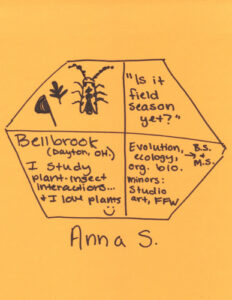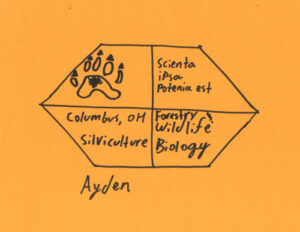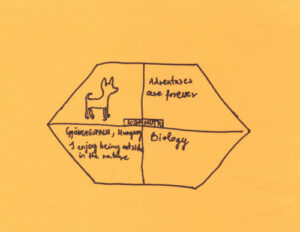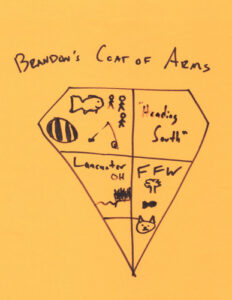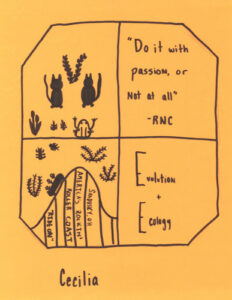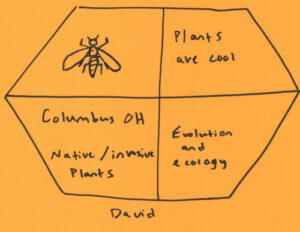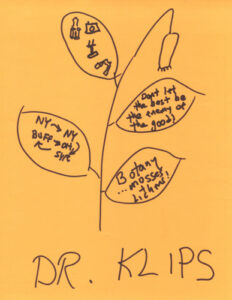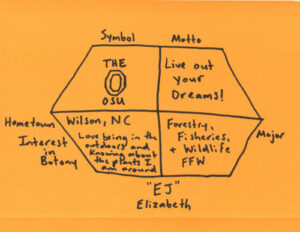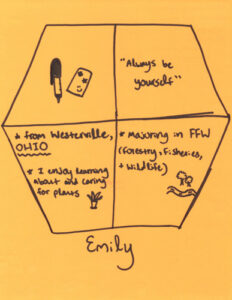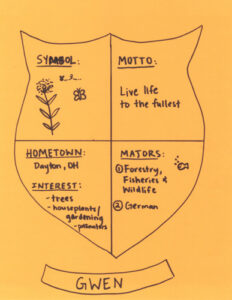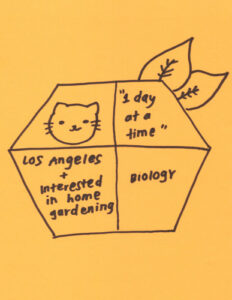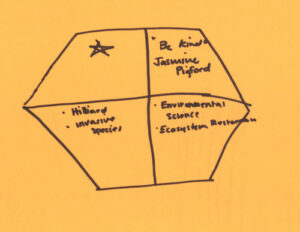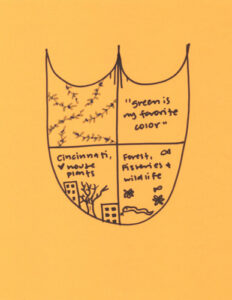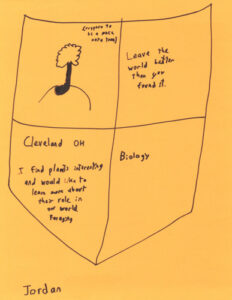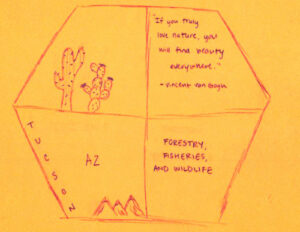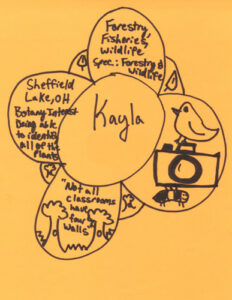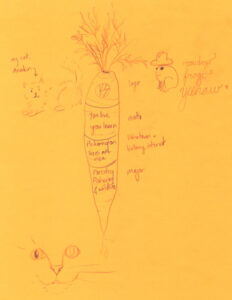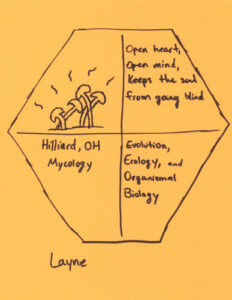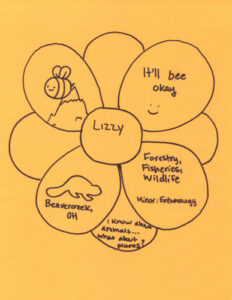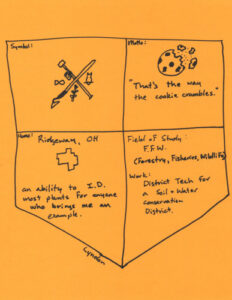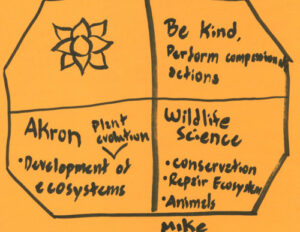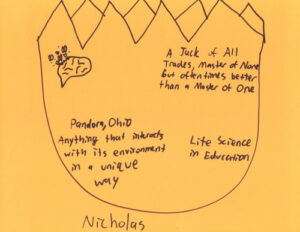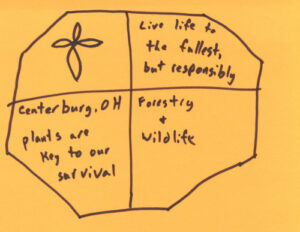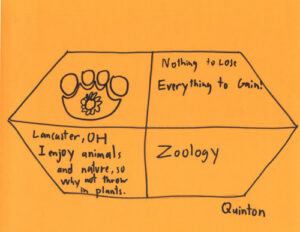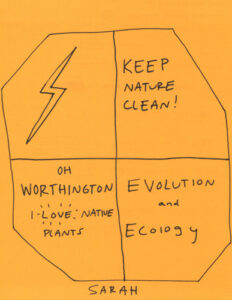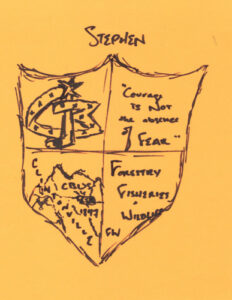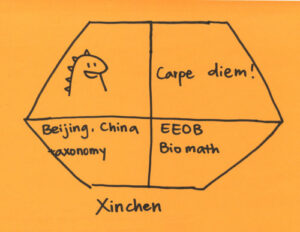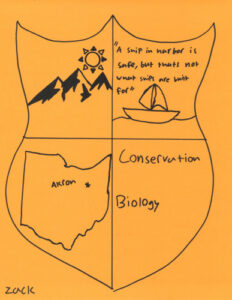It’s been a great pleasure exploring Ohio Plants with you all this term. Enjoy reading some (or all) of the web pages that your classmate colleagues produced this past month. Answers are due Thursday October 13.
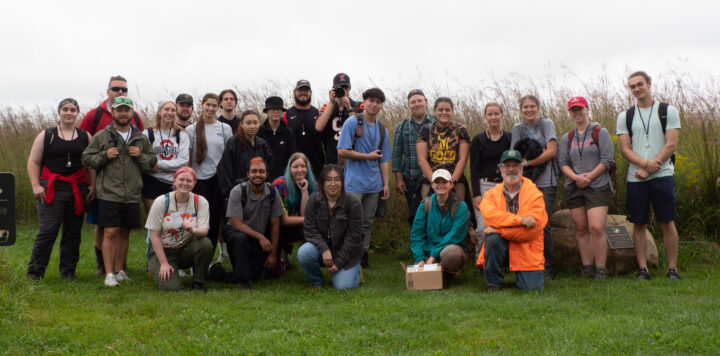
Us at the park.
Aiden, on their PLANTS OF THE BLENDON WOODS LAKE TRAIL page, tells us two ways to identify northern spicebush, and an animal association. What are those ID tips, and the animal use of the plant?
Bence, on their DEEP WOODS page tells us about a vine with heart shaped leaves. What is that vine and what edible fruits do its fruits resemble? Are they indeed edible?
Brandon, on their TREES web page, reports a nice sporting use of the wood of sugar maple. What is that?
Cecilia, on their BDMP/CEDAR BOG page two examples of an intriguing plant-animal interaction. Name and describe that interaction.
Dana, on their TREES page, gives interesting info about the name of the dogwood tree…it has nothing to do with dogs! Why is it called dogwood then?
David, on their PLANTS OF THE OLENTANGY RIVER WETLAND page reports some high CC value trees, one of which has been used to make a blue dye. What is the tree, what is its CC value, and how can it be identified in the field?
Dr. Klips, on their TREES web page mentions an extraordinary 4 years spent by John and Samuel Pringle doing what, exactly.
E.J., on their FINAL INDIAN RIDGE page notes that pin oak leaves are sometimes yellow, and explains what condition is called and its cause. What is the name and explanation?
Emily, on their BOTANICAL SURVEY OF COLLEGE KNOLLS WETLAND page, present their highest CC value plant. What is it, what’s its CC, and what does the plant database from The University of Texas at Austin say about it?
Gwendolyn, on their DEEP WOODS page mentions a lichen that is ecologically important for one animal. What’s the lichen and what’s the animal?
Irene, on their TREES page, sets forth silver maple, and explains how to distinguish it from its “twin,” sugar maple. How can one make that distinction?
Isasbella. on their BOTANICAL SURVEY ADDITIONS page, shows us white mulberry, and explains how and why this native of Asia arrived in North America. How and why?
Jasmine, on their TREES page enlightens us about an unusual way that black walnut was used during the 2nd world war. What was that?
Jen, on their TREES page, found a few of the trees that actually had fruit on them! What were those trees, and how can you recognize them?
Jordon, on their TREES page, has a picture that’s especially fun to look at because it includes the shadow of the photographer! What tree was being photographed at that instant (most likely), and in what dangerous way was it proposed that its identification could be confirmed?
Josh, on their PLANTS OF OVERBROOK RAVINE page, describes the pollination ecology of pawpaw. What is it?
Katie, on their CC VALUES AND FQAI page, demonstrates an invasive plant that looks like native grape. What is that plant, and what interesting method is being used to try an control it?
Layne, on their PLANTS OF INDIAN RUN page, have a beautiful picture of the bark of a tree that can be identified just by the bark. What is that tree?
Lizzie, for their DEEP WOODS special assignment, was tasked with finding two lichens…but may have gone a little overboard! (There are more than two.) One of them is “many-forked cladonia, a reindeer lichen-type lichen that has a distinctive trait that separates it from true reindeer lichens. How can it be recognized? (There’s a nice photo.)
Lyndon, on their BOTANICAL SURVEY page, has a picture and description of an unusual ash. What is it, and what special properties does it wood have that makes it useful (mention the uses).
Michael, on their DEEP WOODS page, explains the meaning of the specific epithet of pinesap. What is it and what does it mean?
Nicholas, on their Nortostachys Jatamansi (?) page describes, with the use of a cleverly misspelled homonym, two aspects of pokeweed. What are they?
Paul, on their PLANTS OF CENTERBURG page, point out a manner in which riverbank grape might help us have fun while on a camping trip or wilderness picnic. How might it?
Quinton, on their GEOBOTANY AND HOCKING HILLS page tells us that eastern hemlock has had some medicinal uses. What were they?
Sarah, on their CEDAR BOG AND BDMP page, show us a carnivorous plant. What is that plant?
Stephen, on their PLANTS OF THE ADENA BROOK RAVINE page, tells us how a vine might cut air conditioning costs. What is that vine , and hoe might it do that?
Xinchen, on their PLANTS OF INDIAN VILLAGE CAMP page, explains the way in which children sometimes savor Amur honeysuckle. How is that?
Zachary, on their GRIGGS RESERVOIR BOTANICAL SURVEY page, point out that chinquapin oak resembles another tree. What is that tree and how can we tell them apart (two ways).
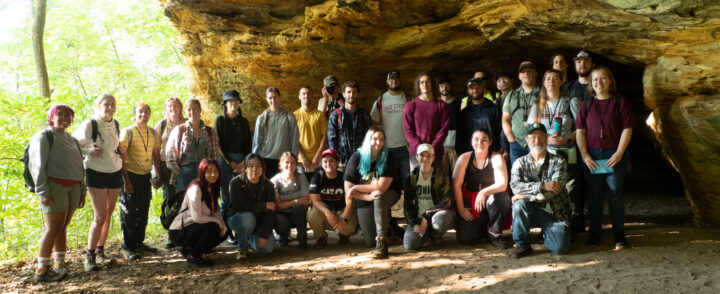
Us at Deep Woods

